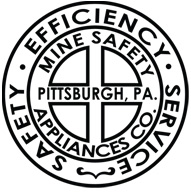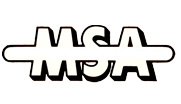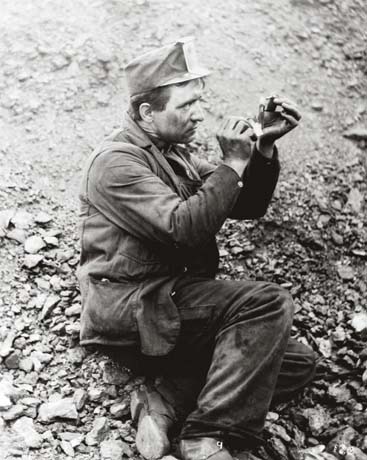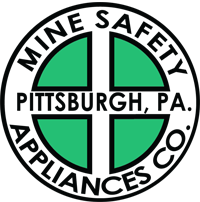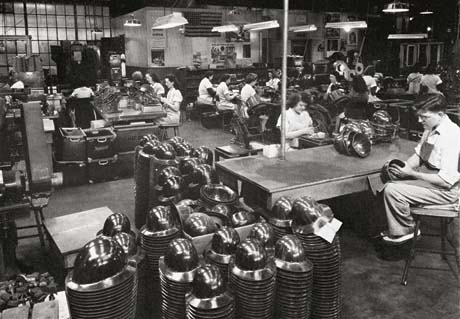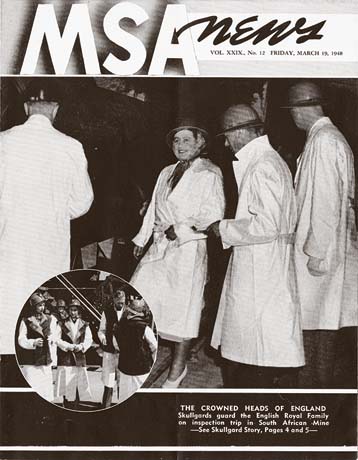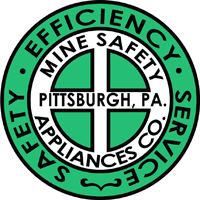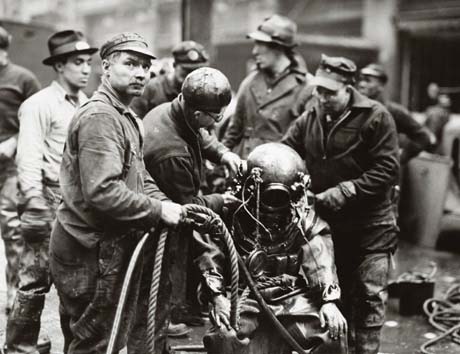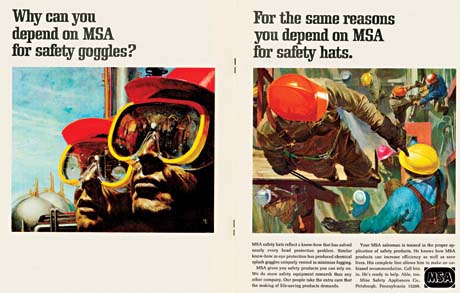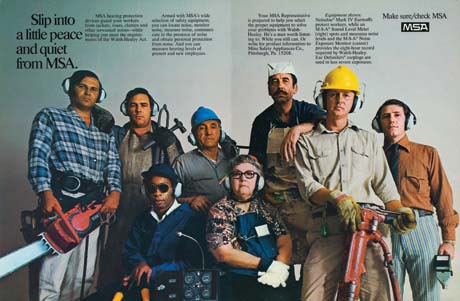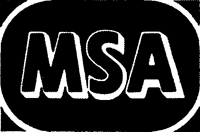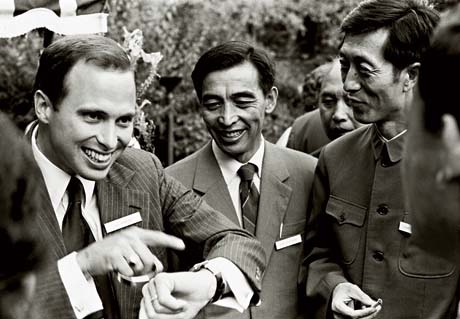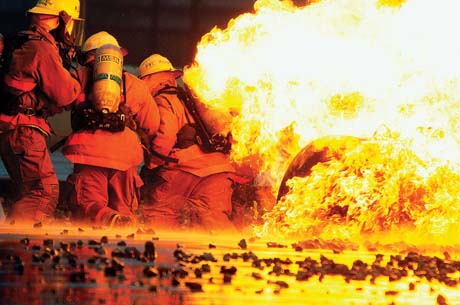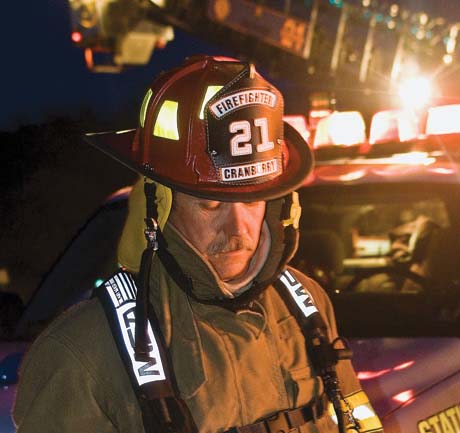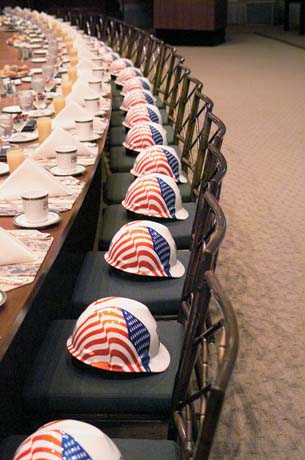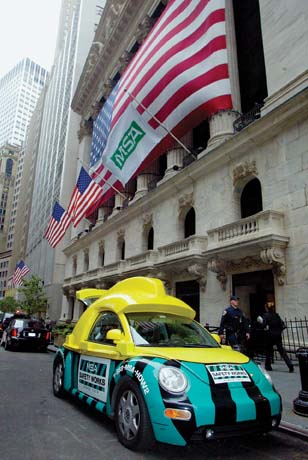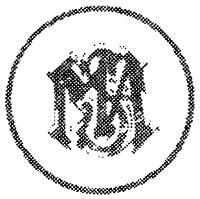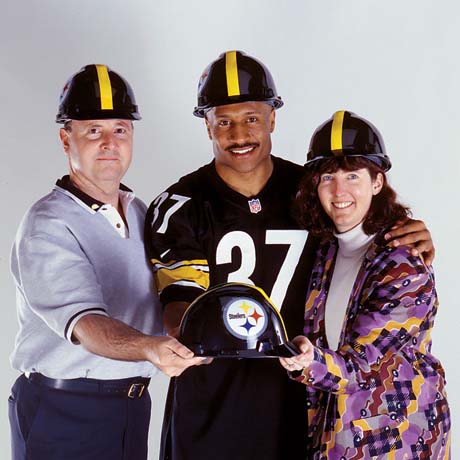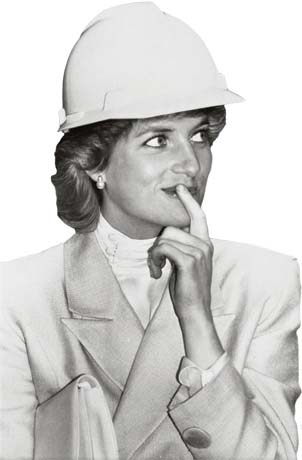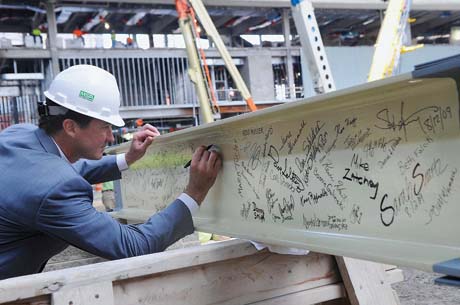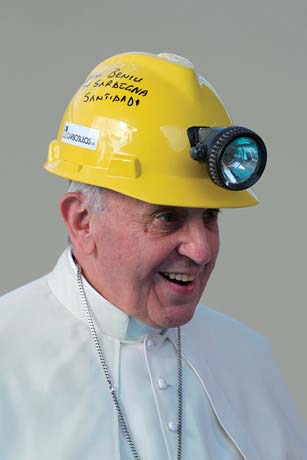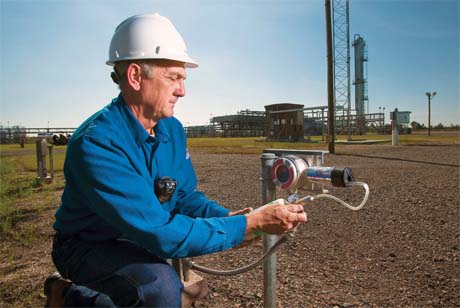MSA Safety Celebrates 100 Years Dedicated to One Mission

On June 14, 2014, MSA Safety Inc., (NYSE: MSA), a Pittsburgh-based company that has literally saved thousands, if not millions, of lives around the world, celebrated its 100th anniversary.
The company’s impact on the world began with the dramatic reduction in U.S. mining fatalities, thanks to the development of the “flameless” Edison Electric Miners Cap Lamp, which MSA introduced and sold beginning in 1915. Along with the development of subsequent generations of cap lamps, MSA continued with the design and manufacturing of a broad range of safety products protecting all those in danger, in civilian occupations as well as U.S. and Allied military personnel in World War I, World War II and subsequent conflicts. The company also made major contributions in dealing with crises at the Three Mile Island nuclear facility near Harrisburg, Pa., and the attacks on America on 9/11.
From its early years, MSA’s visionary leaders expanded the company’s mission of protecting human life, not only in its country and area of origin, but in all parts of the world. When human life and health is at stake, there is no place “foreign” to MSA, as the company strives to protect all in harm’s way in every corner of the globe, and looks forward to new opportunities to protect human life in the years and decades to come.
There have been many historic highlights in the company’s history, but MSA is most proud of what it accomplishes every day, year in and year out, for workers in more than 140 countries around the world: the development and manufacturing of products that help protect men and women every day who work in any and all occupations where hazards exist.
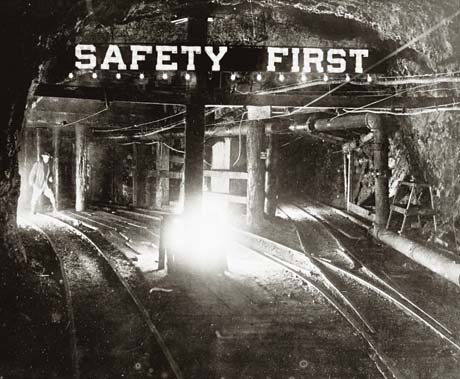
MSA, which was known as Mine Safety Appliances Company until recently, was founded in 1914 by two former mine rescue engineers from the U.S. Bureau of Mines – John T. Ryan and George H. Deike. The company has grown from two employees working in a small, single office in downtown Pittsburgh to 5,300 employees working in more than 40 locations around the world, with annual revenues in excess of $1.1 billion.
Ryan and Deike established MSA because of their horrific experiences investigating underground mine explosions and being engaged in dangerous mine rescue operations while working at the Bureau of Mines. Many of the explosions were caused by the open-flame cap lamps miners wore to provide illumination. An average of 1,000 miners had died on the job in the U.S. each year between 1880 and the early 1900’s, and nearly 100,000 were injured annually.

Ryan and Deike convinced Thomas Edison, considered one of the greatest inventors of all time, to develop a battery-operated lamp. As MSA’s first significant product, it reduced mine explosions and miner deaths by more than 75 percent over the following 25 years. Electric lighting in the mines continued in subsequent years to further reduce fatalities. Later in life, Edison called this lamp the one invention of his that did the most for humanity.
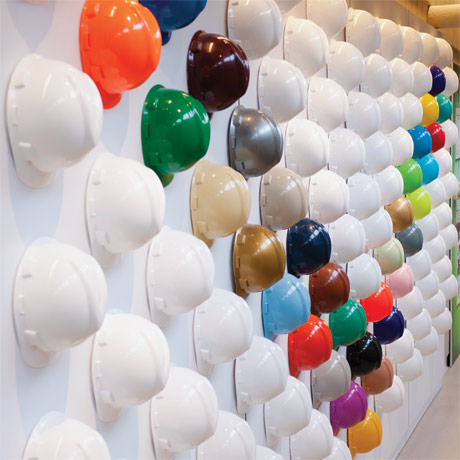
Today, MSA’s largest global markets include the oil, gas and petrochemical industry, the fire service, construction, mining, and general industry. The company’s core product lines include self- contained breathing apparatus, fixed gas and flame detection systems, portable gas detection instruments, fall protection devices, and industrial head protection, including MSA’s iconic V-Gard® hard hat that was introduced in 1962. When 33 Chilean miners were rescued after having spent 69 days trapped underground in 2010, all were wearing a V-Gard helmet when they were pulled to the surface.
A Fascinating History
During much of MSA’s existence, the company has focused on providing the most advanced types of safety equipment for construction workers, oil riggers, firefighters, soldiers, factory workers, chemical plants and anyone else facing hazards in the workplace.
But MSA has also contributed significantly to several notable and historical events:
- During WW I, MSA developed a self-contained breathing apparatus (SCBA) on requisition for General John “Black Jack” Pershing, the commander of the American Expeditionary Forces in Europe, who needed them to protect “sappers” – recruited miners who tunneled underneath enemy lines to pack and detonate explosives.
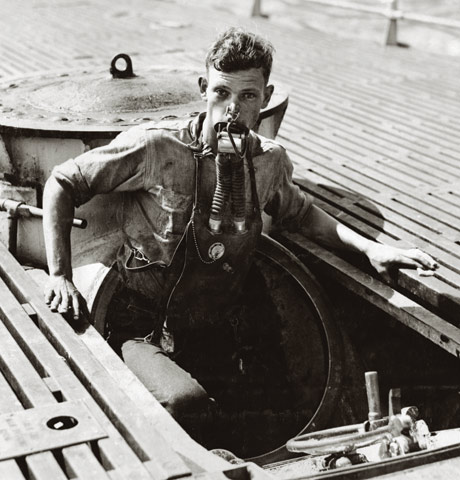 During WW II, MSA developed what is believed to be the world’s first SCUBA device as part of the preparation for the D-Day invasion. It was needed to protect troops in amphibious tanks that entered deep waters from warships moored offshore. Some tanks became submerged in deep water, and many men drowned, until MSA invented the SCUBA apparatus. True to its nature, the company did not patent the device, as it was provided to the military to help in the war effort.
During WW II, MSA developed what is believed to be the world’s first SCUBA device as part of the preparation for the D-Day invasion. It was needed to protect troops in amphibious tanks that entered deep waters from warships moored offshore. Some tanks became submerged in deep water, and many men drowned, until MSA invented the SCUBA apparatus. True to its nature, the company did not patent the device, as it was provided to the military to help in the war effort.- MSA invented a chlorate oxygen candle that provided an emergency supply of oxygen for the Mercury spacecraft and nuclear submarines, including the first U.S. Navy submarine to go under the North Pole.
- The company provided specialized safety equipment for workers following the 1979 Three Mile Island nuclear reactor meltdown; and it provided more than $3 million worth of safety equipment for first responders immediately following the 9/11 terrorist attacks.
- MSA also operated a site at Ground Zero in New York City to help instruct responders on how to wear the equipment properly. The company subsequently received a letter of appreciation from the head of the Occupational Health and Safety Administration for its contributions to workers at the 9/11 sites.

These are a few highlights of MSA’s noteworthy history. Whether producing breathing apparatus for firefighters worldwide, or finding new ways to detect flame and gas leaks in shale mining, the underlying principle of MSA has been the same since the company’s founding.
“The associates of MSA are tremendously dedicated to the very same mission that began 100 years ago by two men who were committed to making workplaces safer,” says MSA President and CEO William M. Lambert.
“It’s not just about making hard hats or breathing apparatus or fixed gas and flame detection instruments or fall protection. It’s about that life we’re trying to protect. I think that message inspires our people to design, develop, sell and market the best possible products that we can to save or protect people on what could be one of the worst days of their lives.”
In mid-June, associates, business partners and friends of the company gathered at the Senator John Heinz History Center in Pittsburgh to celebrate the company’s incredible history.
John T. Ryan III, who was the company’s CEO for more than 16 years and is now MSA’s Non- Executive Chairman of the Board, was among those present. “I always keep in mind what my grandfather and Mr. Deike used to say about why they created MSA: that men and women may work in safety, and that they, their families and their communities may live in health throughout the world.”
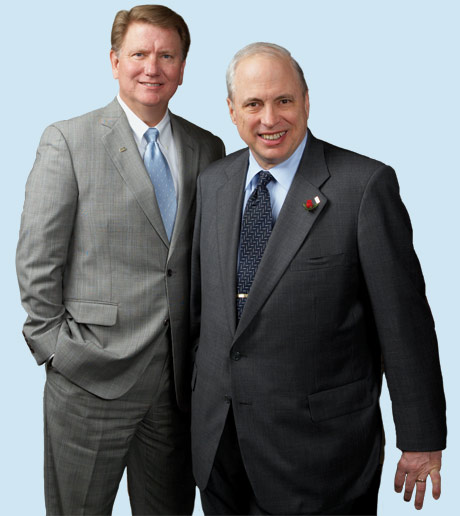
“This is our mission and fulfilling it in a creative, intelligent and prudent way by all MSA associates at all levels, past and present, is the reason for the company’s success,” Ryan continued.
One hundred years later, that mission is still at the heart of MSA. Its history reflects its commitment to those values, not just in words but, much more importantly, in countless deeds accomplished over these many years.
To commemorate the anniversary, MSA has produced a full-length book, fittingly titled, That Men & Women May Work in Safety: The First 100 Years of the Mine Safety Appliances Company, which was released at the History Center gala celebration on June 14.

